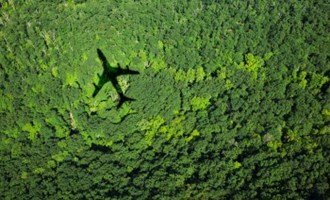Commercial aviation industry is actively looking for green solutions in the form of sustainable jet fuel as they alone contributes around three percent of total global carbon emissions, and in one case, that fuel may have had a previous life as your household food scraps.

Biomass, such as manure and food waste, can be converted into biofuels, which are renewable liquid fuels made from organic matter.
A new study found that fermenting food waste can be broken down into compounds that are highly similar to the fossil fuels that power jet engines. The Oak Ridge National Laboratory scientists converted food waste into the base molecules that make up jet fuel.

The researchers were able to use volatile fatty acids from fermenting old food waste and convert it to simple paraffin molecules that can be used in fuel and really aren’t all that different chemically from traditional fossil fuels.
The fuel worked at the 90 percent conventional petroleum jet fuel, 10 percent alternative jet fuel blend that is required from the industry currently. In other words, this food waste-based fuel works with jet engines that exist and are commonly used today.

Reducing emissions for ten percent of the fuel powering jet engines would go a long way, especially since all that food waste would just be sitting in a dump and giving off greenhouse gases anyway.
It’s a whole lot simpler — and more pragmatic from an environmental standpoint — to clean up fuel for existing aircraft than it is to spend the time and money trying to build an entirely new type of plane from scratch.
They also showed they could push it to a 70/30 blend, but more time and testing are required to allow that ratio in the real world.
Reference- Journal PNAS, Popular Science Story, Futurism, BBC.UK, BP website






